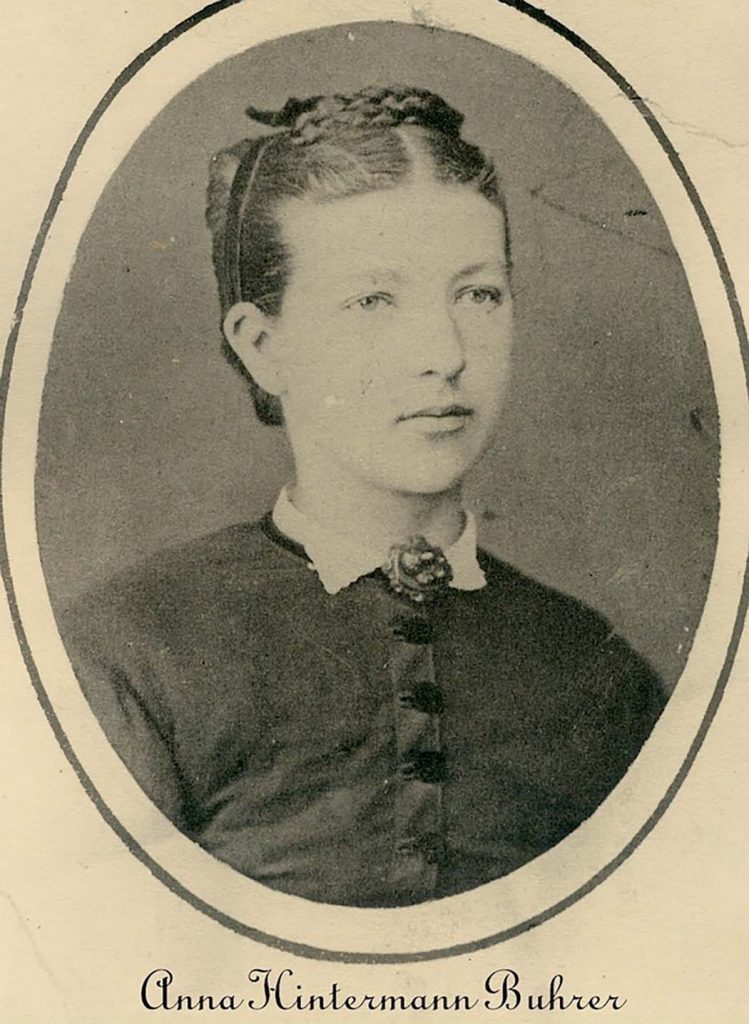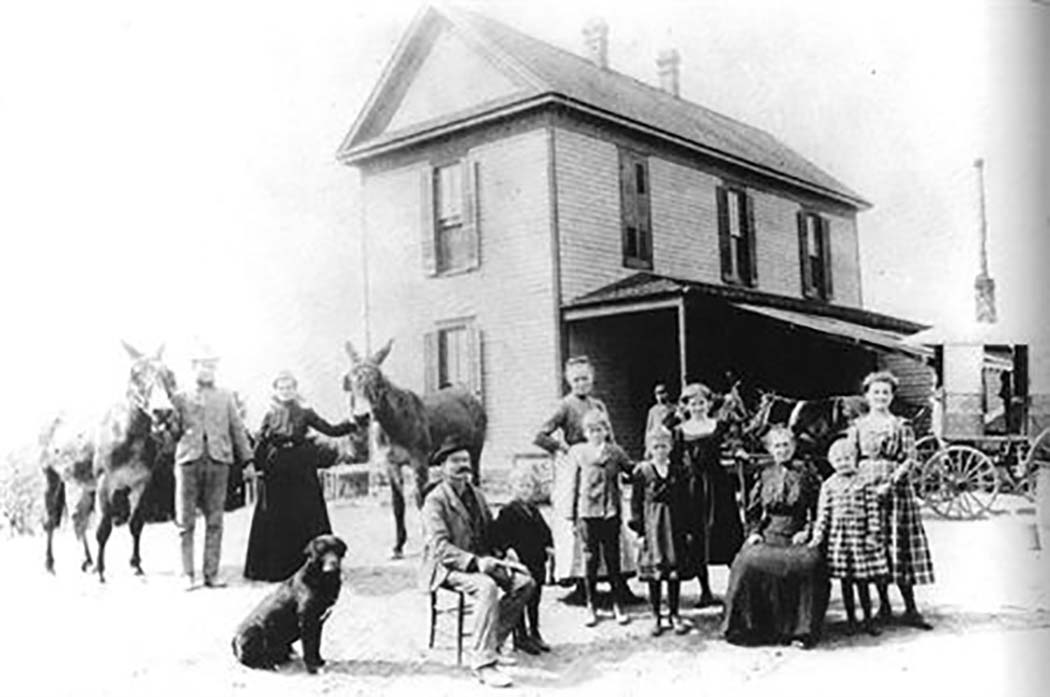
Jacob and Anna Hinterman Buhrer met in Switzerland. Not long after, they moved to Ellenboro, West Virginia, and decided to move to Dallas in the summer of 1879.
They had four children: Arnold, Berth, Julie and Anna.
The family lived in the area that is now Junius and Gaston. Jacob acquired land and 12 milk cows. He quickly realized that the area was not viable for his cattle to graze, so he moved the family to the White Rock Creek area.
They found a meadow with water and good drainage and constructed a house and barn. Jacob purchased 350 acres. In 1890, a white, two-story home sat atop a hill on their property.
They had four more children there. Their names were Herman, Martha, Maria and Walter.
Now that the family had space, Jacob’s herd grew to 40 or 50 milk cows. He also owned horses and mules. Jacob brought milk to town twice a day and called his business the Swiss Dairy. Both sides of the farm’s wagon displayed a painted scene of Holstein cows, a lake and trees.
“In the distance, it showed an elevated place, which I suppose reminded him of the alps in Switzerland where he had grown up,” Anna Buhrer Fritz said in a 1972 interview with the Lakewood Oral History Project.
He rang a bell and customers came to grab the milk.
People left buckets or bottles with tickets that determined how much milk they wanted. Sometimes, the lid didn’t close correctly or the tickets got lost in the wind, and customers left cash in the bottles for Jacob.
After returning to the farm, they milked the cows, put the milk in large cans with lids and then placed the cans in a trough with cool water. Once they were placed in the wagon, they tied wet sacks around the cans. One can contained sweet milk and the other sour or buttermilk.
[quote align=”right” color=”#000000″]
“When automobiles came, we didn’t like them and neither did the horses.”
[/quote]
In the summer, there was always a shortage of water, so Jacob built a well.
“He struck a stream that never went dry,” Fritz said. “We always had plenty of water then.”
The family often picnicked on tables built on the pasture near the deeper part of White Rock Creek.
At the edge of the farm, African-Americans owned 2 or 3 acres, where they built a white church with a steeple and a three-room cottage. Fritz and her siblings affectionately called the married couple who owned the church Aunt Liza and Uncle Paige.
“We loved to go and visit her,” Fritz said. “She would always have something interesting to tell. We brought them extra produce and milk.”
Fritz and her siblings wanted to attend the church after hearing the singing and organ playing from their home.
“If you’re quiet and don’t disturb them, I’ll allow you to go occasionally,” Fritz recalled her mother saying.
Uncle Paige put a bench across the back for her and her siblings. They watched church members sing and let the spirit take over, something they had never experienced before.
In Dallas, there was a Swiss colony, and the family attended St. Paul’s Evangelical and Reformed Church to hear a sermon in German.
“When automobiles came, we didn’t like them and neither did the horses,” Fritz said. “They had these little red cars with the horn on the side, and I suppose they thought it was great sport to make that racket with that horn. Our poor horse would quiver, and we would have to get out and hold him until the automobile went by.”
The Buhrer children walked about 2 miles to attend Floyd School, a one-room building near what is now the Lakewood Theater. It had four windows and outside shutters. In the middle of the room, there was a box stove to keep the school warm.
“They had a blackboard, which was always fascinating to me,” Fritz said. “I would see those older children work an arithmetic problem, all those figures and algebra. I thought those X’s and Y’s must have been interesting.”
In school, they had recess in the morning and an hourlong recess in the afternoon. The students brought lunches in buckets, sacks and baskets. They played “wolf over the river,” which was their version of “red rover.”
The property owned by the Buhrer family was condemned once the City of Dallas voted to build a lake.
In 1904, the matriarch, Anna, died, and the children moved back to Dallas to attend school. As Dallas grew, citizens voted to build a lake on White Rock Creek with a dam at the edge of the Buhrer Swiss Dairy Farm. The farm, including the house and barns, was condemned, and the land was designated for the filtration plant.
Fritz’s brother, Herman, took a few of the cattle to South Dallas and later had his own dairy, which was eventually bought by Borden’s Dairy.
Other sources: “Proud Heritage” by Bertha Fritz and Dallas County Pioneer Association







